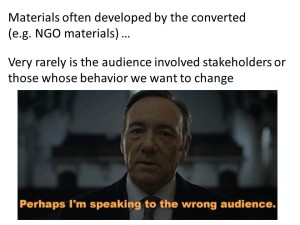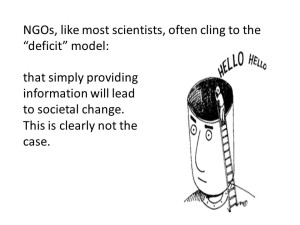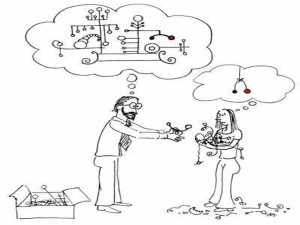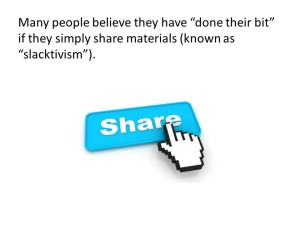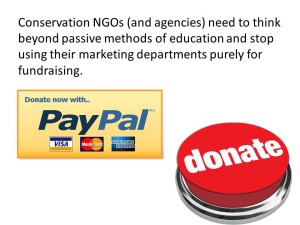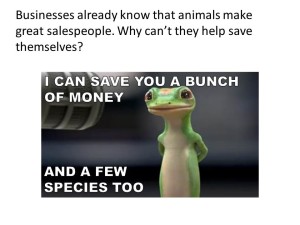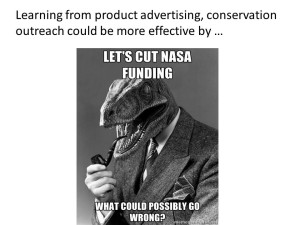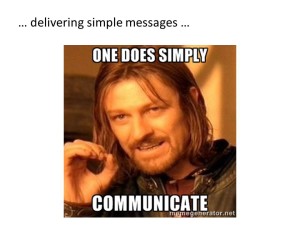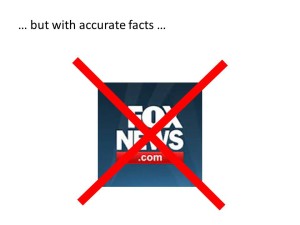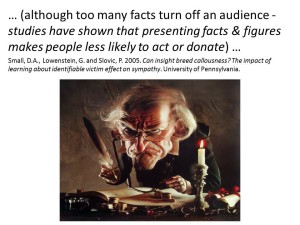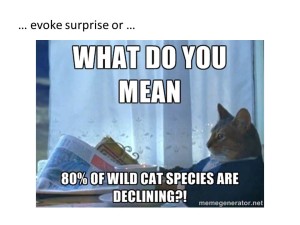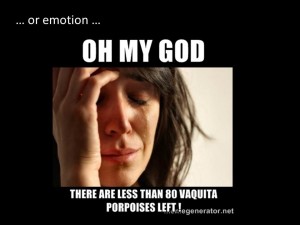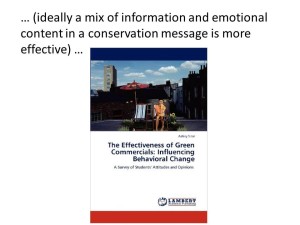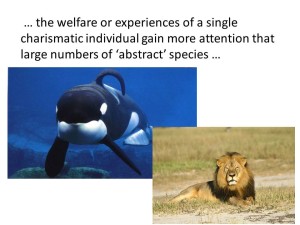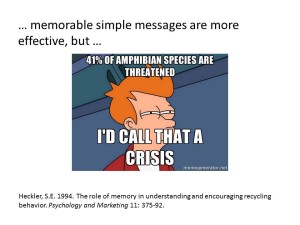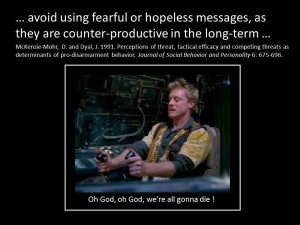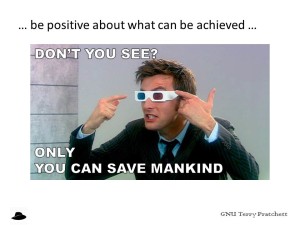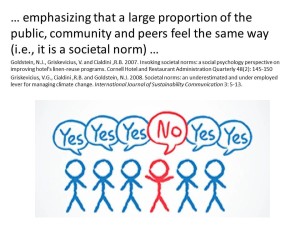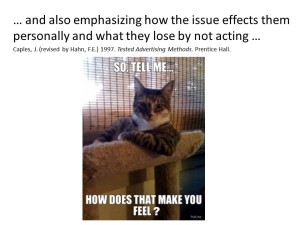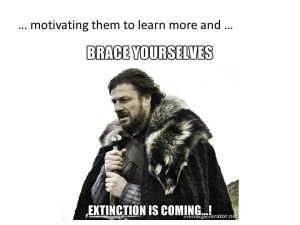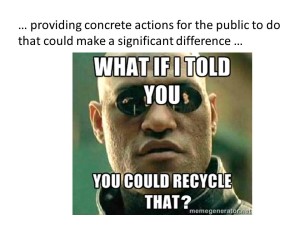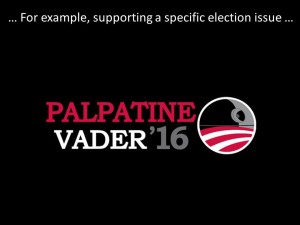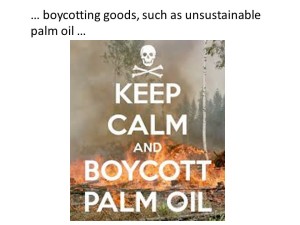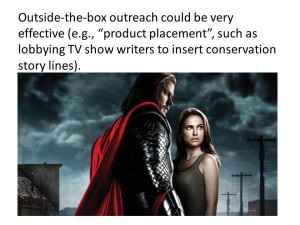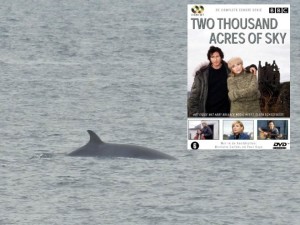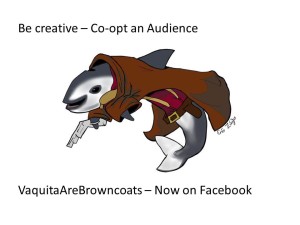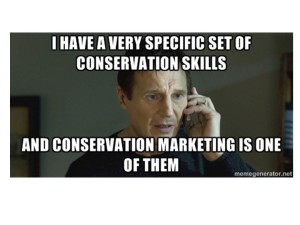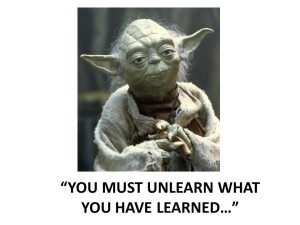This year’s International Congress for Conservation Biology had a special double symposium on conservation marketing. What is conservation marketing I hear you ask? Well it’s using the tried and tested techniques from the advertising field, behind which there is a significant amount of research, to increase public awareness and especially change public behavior to aid conservation. Conservation marketing is already being used by several NGOs and initiatives – RARE for example. The Society for Conservation Biology has recently set up a working group for Conservation Marketing and Engagement* as it’s believed that this technique could help highlight many endangered species and highlight important conservation issues.
In this symposium myself and several colleagues had a presentation on why the advertising campaigns of conservation NGOs are doing things wrong – specifically these campaigns are often geared towards fundraising, telling members and especially donors what a great job they’re doing, launching surveys or petitions that do little to help conservation, oh and more fund- raising. The general public has a dire understanding of the need for biodiversity conservation or endangered species, and instead of increasing awareness and getting the public to change their behavior to act in a more pro-conservation manner, NGOs are instead concentrating on …hey did I mention fund-raising?!
As the result of many requests for copies of the presentation slides, I’ve decided to make them available for Southern Fried Science. Most of the slides are self explanatory. Feel free to copy and steal memes you like and count up the number of geeky references ….
(It’s a depressing point that in a recent study, members of the public were more concerned about made up cetaceans than they were the world’s most endangered cetacean (the vaquita). In another study although people understood what biodiversity was, and could even tell interviewers the benefits of biodiversity, they did not really care – their concern for conserving biodiversity was low. They were more concerned about conserving charismatic species and ecosystems (like coral reefs)
(For example the RSPB in the UK has over 1 million members, and 10% of the dutch population belong to WWf – why are we not mobilizing this massive sector of the population?)
(The deficit model idea is taht if the public simply had more information then they would do the right thing. Most scientists assume the deficit model and that just giving the public and policy-makers the right information, then conservation will come about. This of course is very, very rarely the case – for example, climate change)
(as found in the above study by Ashley Sitar – environmental ads with a mix of informative and emotional material had more impact than ads with just one of the other)
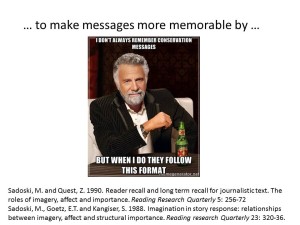
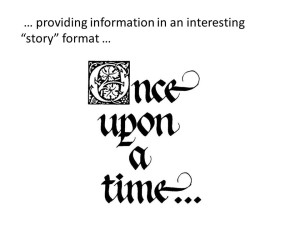
(best selling author Terry Pratchett once referred to humans as Pans narrans – the storytelling ape – as humans respond to, and remember, information in the form of stories. There is after all a reason why journalists refer to their articles as “stories”)
(The furor over Cecil the Lion shows that humans can relate to the welfare and conservation of a single animal often more easily than abstract concepts such as species, populations, or heaven forbid, “stocks’. The Amount of funds raised for Keiko the “Free Willy” whale, eclipses the amount of funds raised for conservation projects on threatened wild killer whale populations, because the public cared for the welfare of that individual whale. Conservationists need to work with this public sentiment, instead of ignoring or fighting against it)
(The #oceanoptimism hashtag was borne out of a realization that doom and gloom messages about the dire state of the oceans was having a negative effect – conservation scientists need to point to the light at the end of the tunnel)
(This may be one way celebrity endorsements can be effective. The public see celebrities so much that they often consider them to be peers and trust their advice. Selective celebrities for endorsements should be done carefully though. If you can only secure a D list celebrity, the public will think that your campaign is likewise D-list. However, although a more minor celebrity, endorsement by (king of geeks) Wil Wheaton can be very effective as his has a loyal following of very educated and influential followers (geeks and nerds!), so niche celebrities can be effective (e.g. clebrity cooks and sustainable foods). Having a celebrity endorsement from Snooki however, could back fire …
(Politicians care about votes and funding. If conservationists cannot compete with corporations for funding, we can potentially influence politicians by highlighting that supporting certain issues may win them extra votes. Winning votes from swing voters are particularly important for politicians)
(Boycotts can be incredibly effective – e.g. boycotting tuna that was caught in ways that killed dolphins, changed the tuna industry and stopping the deaths of hundreds of thousands of dolphins)
(The profession of Natalie Portman’s character in Thor was changed from a nurse to a particle physicist at the behest of scientists wanting to increase the portrayal of scientists, especially women scientists, in movies)
(Suggestions for adding local flavor and conservation issues led to whale-watching being included in this popular UK TV program. Other popular drama programs have also featured conservation issues, but the expert at this is …)
(The archers is a long-running radio soap opera in the UK , indeed it is a national treasure, but it originally was developed as a way to introduce modern farming information to British farmers, who were infamously resistant to Governmental advice and interference. Today a lot of information on conservation, especially where it relates to sustainable farming, is featured in the show).
Please do visit and like the VaquitaAreBrowncoats facebook page
(Conservation scientists are taught to communicate their science in a certain way – if they really want to interact with the public, to get them to change their behavior and remember their message, they arguably need to communicate more like advertising companies and less like academics…)
*If you are an SCB member and you want to join the working group – on the SCB website on the right hand side, under “My Society Involvement” click “Join a Work Group” – you can be a member of multiple working groups, and membership is free.







